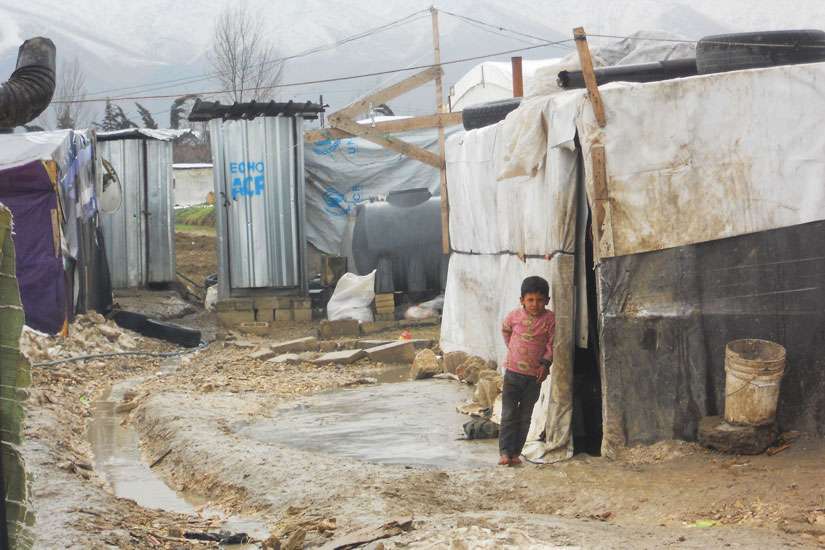“No place today is safe for Syria’s children,” Peter Salama, UNICEF’s Mideast director, told Catholic News Service in Amman, Jordan. “A new and disturbing pattern of violations against children’s rights has emerged in the conflict. This generation is at grave risk.”
The five-year civil war has created 2.4 million child refugees and seen many children recruited to join the warring sides.
The crisis has spilled beyond Syria’s borders and into refugee camps in neighbouring states. In Lebanon, interrupted educations and widespread use of refugee child labour are causing conflict between refugees and the Lebanese in a country where 25 per cent of the population is now Syrian refugees.
“This issue (exploitation of cheap refugee labour) is, I can claim, the main conflict driver in Lebanon now — competition for work,” said Elias Sadkni, the founder and director of Beirut-based House of Peace.
“Many, many kids are forced to work to help support their families.”
Lebanese employers are laying off Lebanese workers to hire refugees at salaries that are half or even one-third of normal, he said. Often the new, cheaper labourers are school-aged children, who are not stopped at checkpoints as their fathers are, Sadkni told The Catholic Register.
But the demand for cheap labour and the scarcity of jobs are only one factor keeping children out of school. It’s also difficult for refugee children who have been out of school for years to fit in to Lebanese schools, where the curriculum is quite different.
“It wasn’t easy to just go to Lebanese schools,” said Catherine Mora, a Syrian refugee and English teacher who arrived in Canada in January.
Twenty-eight-year-old Mora spent a year teaching English with the Jesuit Refugee Service in Byblos, just outside Beirut, before coming with her brother and parents in one of the first airlifts to Kingston, Ont.
“It was a big challenge. We weren’t looking at those kids in a special way,” said Mora. “We weren’t teaching a normal class with normal students.”
Kids who had survived sieges, battles and harrowing journeys out of Syria provided an enormous contrast with Mora’s brief pre-war teaching experience at an exclusive private school.
“We had to teach students everything, not just teaching them from books,” she said. “We had to teach them how, from the simplest things, how they knock at the door, how they sit, how they open books, how they use pencils.”
The problem of getting Syrian kids into regular, accredited schools in Lebanon is a major worry in the Syrian refugee community.
“With women especially, it’s the main issue they put on the table to discuss,” said Sadkni.
Education and child labour combine to put enormous stress on refugee families, he said.
His new organization, House of Peace, has partnered with the Canadian Catholic Organization for Development and Peace. With funding and other supports from the Canadians, House of Peace tries to smooth out conflicts that arise between Syrian refugees and their Lebanese hosts.
Even as peace talks continue in Geneva, the West has to realize the danger of a generation of young Syrians shut out of education and used for cheap labour, Sadkni said.
“The Western world needs to spend much more on solving these problems. It’s not a local conflict. It has become an international problem,” he said.
Most Syrian refugees want to return home as soon as they can, but the level of destruction in Syrian cities such as Homs and Aleppo won’t allow a quick and easy resettlement.
“But that’s not going to happen for everyone” Sadkni said. “It’s not going to happen in a short time. So we need to think about what’s going to happen on the long term.”
In a March 9 letter to Prime Minister Justin Trudeau, Development and Peace executive director David Leduc asked the Canadian government to dedicate more resources towards the Syrian refugee crisis. During five years of war in Syria, Development and Peace has spent $24.2 million on humanitarian aid and on local initiatives to promote peace.


